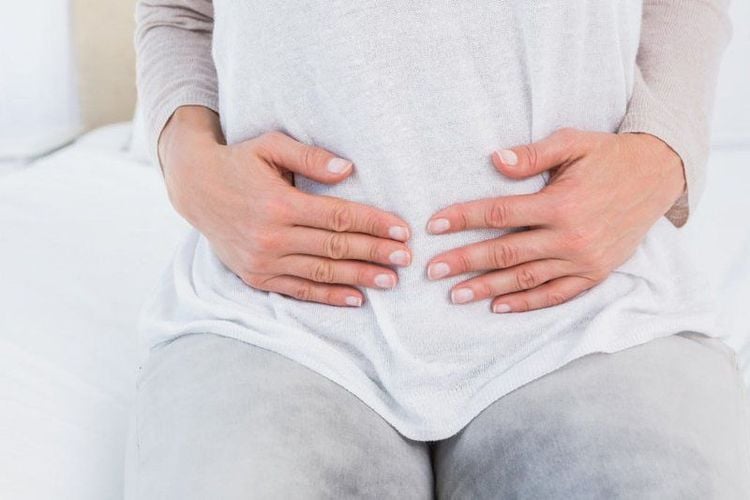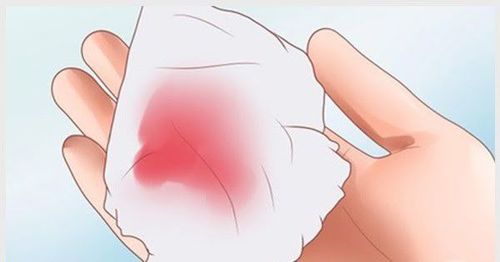This is an automatically translated article.
This article was professionally consulted by Specialist Doctor I Truong Nghia Binh - Obstetrician-Gynecologist - Department of Obstetrics and Gynecology - Vinmec Da Nang International General Hospital. Doctor has more than 13 years of experience in the field of Obstetrics and Gynecology.Worrying about the risk of miscarriage is a common sentiment among many pregnant women. Learning about common causes of miscarriage will help pregnant women feel more secure and proactively improve their pregnancy health.
1. Miscarriage Overview
Most miscarriages occur before the 20th week of pregnancy, with more than 80% occurring within the first trimester. Miscarriage rarely occurs after the 20th week of pregnancy, if it does, it is called a late miscarriage.According to statistical data, at least 85% of women who have had a miscarriage will get pregnant again and give birth normally afterwards. The causes of miscarriage often do not reflect female fertility. Only about 1-2% of women may have multiple miscarriages (three or more) due to an autoimmune reaction.
Symptoms of miscarriage include:
Vaginal bleeding that progresses from mild to severe; Abdominal and lower back pain; Cramps, fever and fatigue; There is fluid or fetal tissue coming out of the vagina. However, there are still many pregnant women who experience vaginal bleeding during the first trimester of a successful pregnancy. Therefore, if you have any suspicious symptoms, you should immediately go to the obstetrics clinic for accurate diagnosis and monitoring.

2. Causes of miscarriage
2.1. Chromosomal abnormalities More than 50% of first-trimester miscarriages are caused by a problem with the baby's chromosomes. Chromosomes contain genes that determine unique fetal traits, such as hair and eye color. The fetus will not be able to develop normally if there is an error in the number or there is a chromosomal mutation.Usually, the chromosomal disorder occurs randomly as the embryo divides and develops, not a problem inherited from the parents. Therefore, this cause of early spontaneous abortion usually does not happen again if the mother continues to have a pregnancy in the future.
So far medicine has not been able to find a way to prevent abnormal chromosome problems. However, as a woman gets older, especially after the age of 35, the risk of chromosomal problems in particular and miscarriage in general increases.
2.2. Health condition The cause of a second trimester miscarriage, also known as the second trimester, is usually due to the mother's health condition. Some health problems that increase a woman's risk of miscarriage include:
Infections such as Cytomegalovirus (CMV) or rubella ; Poorly controlled chronic diseases such as diabetes or high blood pressure; Thyroid disease, lupus erythematosus, and other autoimmune or hormonal disorders; Uterine problems, such as fibroids or uterine malformations; Cervical incompetence (also known as cervical incompetence) causes the cervix to thin and widen prematurely before the pregnancy reaches full term. 2.3. Lifestyle Some dangerous habits of pregnant women can affect the development of the fetus and cause early spontaneous abortion, including:
Smoking (some studies show that the risk of miscarriage will increase the risk of miscarriage). increased even if the pregnant woman smokes only passively, that is, only people around are smoking); Abuse of alcohol; Use of drugs and stimulants.

Use of old plumbing or exposure to with the paint of old houses built before the 80s; Mercury poisoning from broken, broken thermometers or fluorescent bulbs; Exposure to solvents such as paint thinners, degreasers, stain removers and varnishes; Exposure to pesticides to kill insects or rodents; Arsenic poisoning from living near landfills or using well water; If there are concerns about harmful factors from the environment, women need to clearly explain it to their obstetrician for further advice and support.
2.5. Other causes In fact, most causes of miscarriage are uncontrollable and difficult to pinpoint. However, there are a number of different risk factors that increase the risk of miscarriage, including:
Age: Women over the age of 35 have an approximately 20% higher risk of miscarriage and this rate increases with age. age of women (40 years old: 40% and 45 years old: 80%); After multiple miscarriages: Women who have had two or more miscarriages are more likely to have another miscarriage; Weight: Being underweight or overweight is also associated with an increased risk of miscarriage; Invasive prenatal testing: Certain prenatal genetic tests, such as chorionic villus sampling and amniocentesis, carry a slight risk of miscarriage. On the other hand, it is important to distinguish that everyday activities, such as sports, sex and working in an environment without harmful chemicals or radiation, will not be the cause of miscarriage.
3. Measures to protect pregnancy

Prenatal check-ups and screenings; Regular prenatal check-ups to promptly prevent and treat abnormal problems, especially prioritizing the control of existing diseases; Take a daily multivitamin, especially Folic Acid (Vitamin B9); Limit dangerous habits, maybe ask a doctor to help you quit stimulants; Talk to your doctor about the environmental risks you live in and refer to appropriate pregnancy protection; Carry out necessary obstetric tests if you have had multiple miscarriages. It should be noted that the majority of early spontaneous abortions are not caused by the mother, so you should try to overcome guilt or self-blame, as well as avoid falling into negative emotions during pregnancy. long time. Instead, women need to work closely with their doctors and adjust their lifestyle to a healthier way to confidently look forward to a healthy pregnancy.
Please dial HOTLINE for more information or register for an appointment HERE. Download MyVinmec app to make appointments faster and to manage your bookings easily.
Reference source: webmd.com; mayoclinic.org













